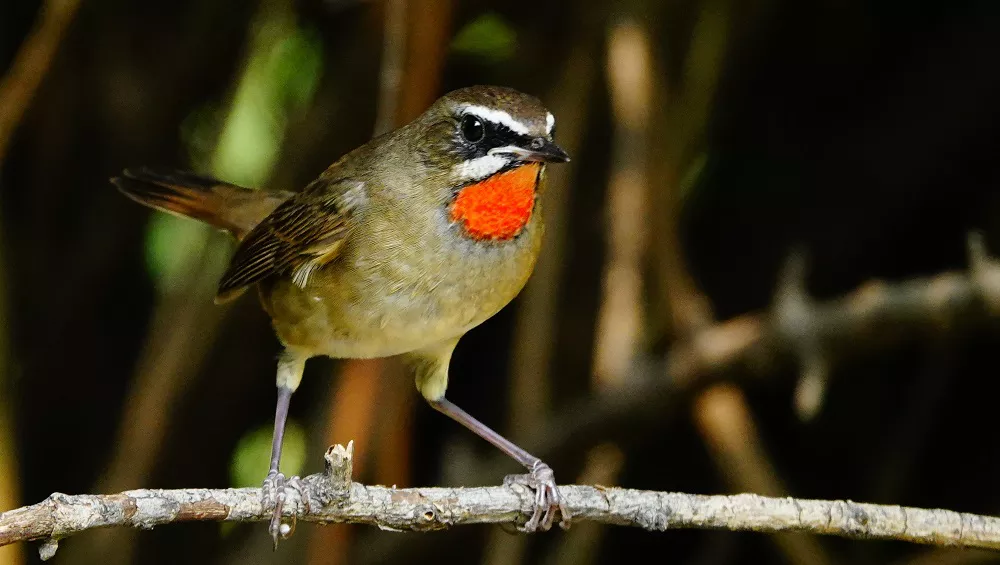The Siberian rubythroat is a small, vibrantly colored bird that is found in parts of Asia, particularly in the northeastern regions such as Siberia, China, Mongolia, and Japan. It is one of the 14 subspecies of the rubythroat species.
- Physical Characteristics
Siberian rubythroats are small birds, measuring around 13 centimeters in length and weighing only 10 to 15 grams. The male has a distinctive ruby-red throat, bordered by a narrow black line, which is its most striking feature. Its back and wings are olive-brown, and its underparts are grayish-white. Females, on the other hand, have a plain olive-brown plumage and a whitish throat, which is streaked with black.
- Habitat and Distribution
Siberian rubythroats prefer moist, thickly vegetated habitats such as forests, marshes, and wetlands. They breed in the northern regions of Asia, ranging from the Yamal Peninsula in the west to the Kamchatka Peninsula in the east. During the winter months, they migrate to southern parts of Asia, such as India, Southeast Asia, and Indonesia.
- Behavior and Diet
Siberian rubythroats are active and agile birds, known for their quick movements and their ability to perch on thin branches and twigs. They feed on insects, spiders, and other small invertebrates, which they catch in the air or pick from foliage. They are also known to consume berries and other fruits during the winter season.
During breeding season, males establish territories and sing to attract females. They have a loud, clear, and melodious song, which is composed of a series of whistles and trills. Once a female is attracted, the male performs courtship displays, including puffing up its chest, fluffing its feathers, and fanning its tail.
- Conservation Status
The Siberian rubythroat is classified as a species of least concern by the International Union for Conservation of Nature (IUCN). Although their populations are thought to be declining in some regions due to habitat loss and degradation, they are still widespread and abundant throughout most of their range.
In some countries, such as Japan, the Siberian rubythroat is considered a protected species, and it is illegal to capture, kill, or trade them. Birdwatchers and ornithologists also contribute to the conservation of the species by monitoring their populations, studying their behavior, and raising awareness about their importance in the ecosystem.
The Siberian rubythroat is a beautiful and fascinating bird that has adapted to living in some of the harshest environments on earth. Despite the challenges it faces, it remains a resilient and adaptable species that is an important part of the natural world. As we continue to learn more about the Siberian rubythroat and its behavior, we can better understand and appreciate the complex web of life in which it plays a part.


 Facebook
Facebook  Instagram
Instagram  Youtube
Youtube 